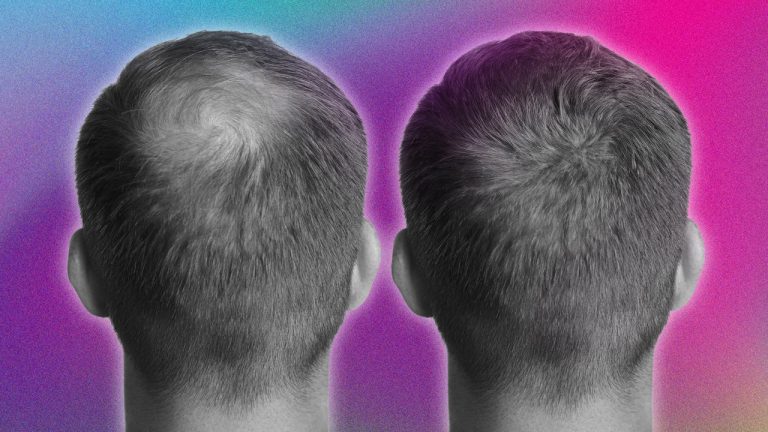What is the difference between a hair transplant and scalp micropigmentation? If you’re one of the 6.5 million blokes in the UK currently suffering from hair loss, this is a question you’ve probably asked yourself on more than one occasion. Both have their pros. Both have their drawbacks. And, while the results can sometimes seem quite similar, the processes involved couldn’t be more different.
According to American Hair Loss Society, male pattern baldness (clinically known as androgenetic alopecia) is the most common type of hair loss for men. It affects about 85 percent of men by age 50, and usually begins around their late 20s and early 30s. If you’re in those age groups and you’re starting to think about it, that’s okay! It’s completely normal.
But if it’s something that’s of personal concern, it might be time to take action. So we caught up with some of the UK’s leading hair transplant surgeons and micropigmentation specialists to discuss the main differences between each procedure. And, hopefully, it will help you find the right solution.
What is a hair transplant?
“Hair transplantation is a procedure that takes donor hairs usually from the back and sides of the scalp and moves them to areas of deficiency,” says the hair transplant surgeon. Dr. Manish Mittal. “The two most common methods include follicular unit excision and follicular unit transplantation.”
Follicular unit excision (or FUE, for short) is when individual follicular units are taken from the back and sides of the head and replaced in areas of deficiency. This method leaves less scarring and should only be performed by surgeons and not outsourced to technicians. When performed correctly, patients are left with minimal scarring, meaning they will be able to get shorter haircuts.
A follicular unit transplant (or FUT), on the other hand, is when a long strip is taken again from the same donor site. It is then cut under a microscope and replaced in areas of deficit. It’s worth noting that this will likely leave a long scar and may mean that patients may struggle to hide it when wearing shorter hairstyles.
What is micropigmentation of the scalp?
“Scalp micropigmentation is a cosmetic treatment primarily used to camouflage hair loss and create the illusion of a fuller head of hair through the application of carefully applied pigments,” says Marzena Kojder, chief scalp micropigmentation technician. Westminster Medical Group. “SMP uses highly refined needles and pigments to create impressions of tiny dots on the skin that simulate the appearance of real growing hairs emerging from the scalp. This can also be applied to longer thinning hair to create the illusion of higher density by reducing the contrast ratio between lighter skin tones and darker hair colours.’
“For those who shave with little to no hair, SMP can be applied to recreate the look of a full head of short shaved hair that blends seamlessly with other shaved hairs throughout the scalp. It can be used to camouflage scalp scars from trauma, burns or even older hair transplant strip scars.”
Many assume that this is just like a tattoo, but the pigment used for SMP is actually carefully deposited into the top layer of the skin, which is not as deep as a traditional tattoo that goes all the way down to the bottom of the skin.
What are the benefits of a hair transplant against scalp micropigmentation?
“One of the main advantages of hair transplantation over micropigmentation of the scalp is the more natural appearance, as real hairs are used and not small tattoo dots,” says Dr Tetiana Mamontova, hair transplant surgeon at Harley Street Hair Transplant Clinics. “To continue this, the initial cost of a hair transplant will be more expensive, however, long-term SMP requires additional sessions that will certainly increase over time.”
“I can’t stress this enough, but hair transplants are for people who want to restore their hair,” says hair transplant surgeon Dr. Mark Tam. “And because it’s your real hair, you’ll be able to grow it out if you want to try a different style rather than just a simple cut.”
What are the benefits of scalp micropigmentation over hair transplant?
“Scalp micropigmentation is becoming increasingly popular due to the ease of the procedure, minimal downtime, minimal pain and immediate guaranteed results compared to the longer time required for a hair transplant,” says Jay Grewal, founder and principal artist at Elixir Pigmentation. “In addition, SMP may free individuals from relying on medications to control hair loss and potentially avoid the need for additional hair transplants in the future.”
https://www.gq-magazine.co.uk/article/hair-transplant-vs-scalp-micropigmentation

